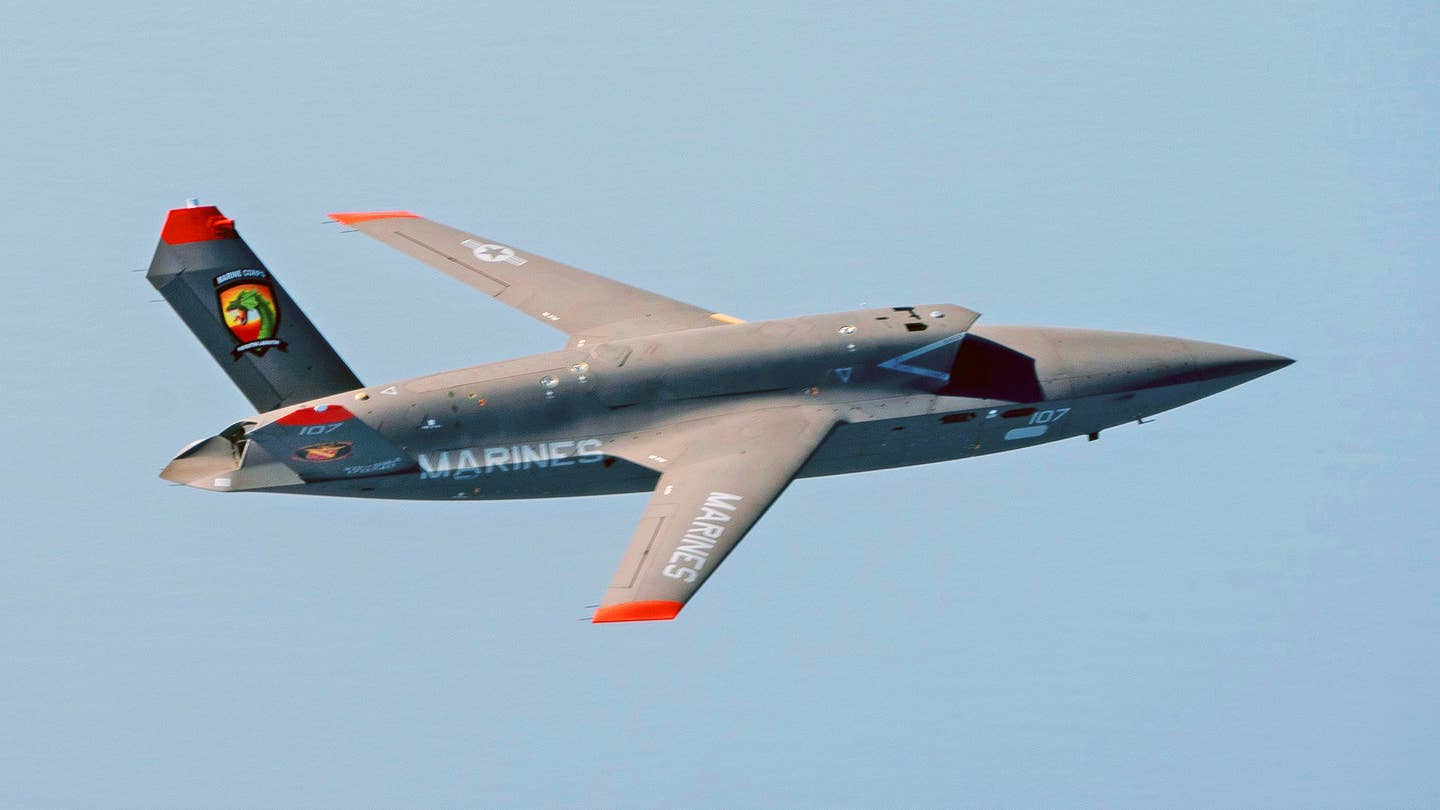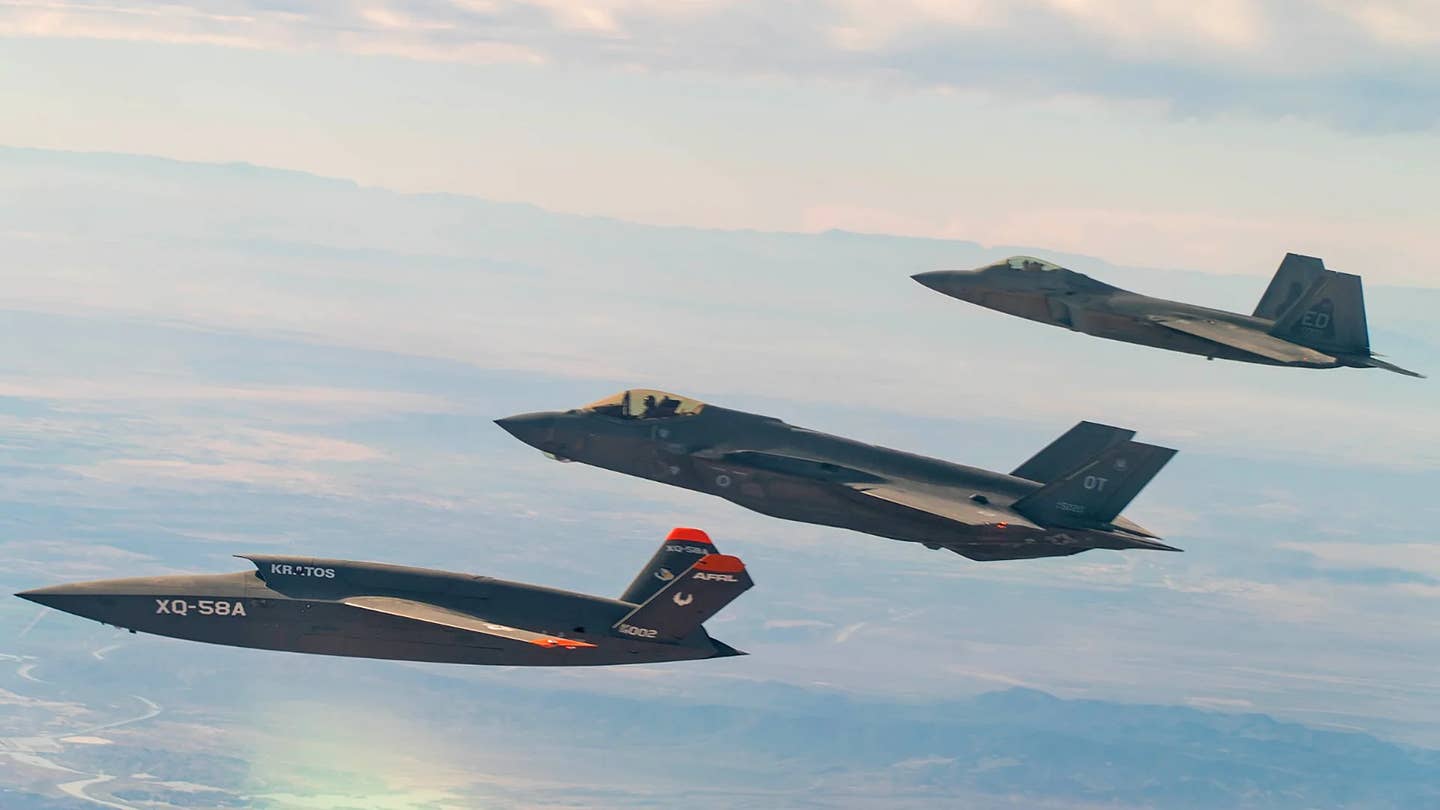The US Marine Corps (USMC) has achieved a key milestone by successfully conducting the maiden test flight of the cutting-edge Kratos XQ-58 Valkyrie.
Following the US Air Force, this achievement officially positions the USMC as the second military branch to operate this experimental aircraft. The test flight took place on October 3 at Eglin Air Force Base in Florida, the service announced on October 5.
The flight was executed with collaborative support from both the Air Force and Navy. This test flight marks the latest step in the Marine Corps’ ongoing efforts to embrace the concepts outlined in Force Design 2030 by former Commandant General David Berger.
Within the framework of service-wide plans, the Marine Corps is slated to engage in Expeditionary Advanced Basing Operations against near-peer opponents, focusing on conducting these operations over long distances.
Lieutenant Colonel Donald Kelly, from the USMC’s aviation department, said that the Marine Corps is continuously striving to upgrade and strengthen its capabilities in a rapidly changing security landscape.

Presently, the Marine Corps possesses two XQ-58s procured from Kratos in January.
This acquisition was part of the US Navy’s Penetrating Affordable Autonomous Collaborative Killer – Portfolio (PAACK-P), and the two cutting-edge drones were officially delivered to the service in March.
The Marine Corps has high expectations for the PAACK-P program, anticipating that it will seamlessly integrate into the Tactical Aircraft (TACAIR) segment of the broader Marine Air-Ground Task Force Unmanned Aerial System Expeditionary drone program, known as MUX.
The Marine Corps has also shared visual documentation from the recent test flight, which includes a video and a few images showcasing the Valkyrie bearing the model number 107.
Pictures taken during the September 2023 Marine Corps Air Station Miramar Airshow showcase the second Marine XQ-58, distinguished by its model number 109.
The US Marines’ Interest in the XQ-58 Valkyrie
Scott Bey, a prototyping and experimentation portfolio manager at OUSD(R&E), has revealed that the US Marine Corps (USMC) plans a series of six test flights with the Valkyrie.
These test flights are envisioned to play a pivotal role in shaping the future requirements and capabilities of autonomous aircraft.
During the span of these six planned test flights, the US Marine Corps (USMC) is set to conduct a thorough assessment of the XQ-58 and artificial intelligence-driven aircraft in a broader context.
The evaluation will include a diverse array of mission profiles, encompassing intelligence gathering, surveillance, and reconnaissance missions and providing electronic warfare support to crewed platforms.
It remains uncertain whether any testing will encompass the deployment of weaponry or other equipment. But, during the 2023 Miramar Airshow, the Marine Valkyrie was exhibited alongside two non-functional AIM-120 Advanced Medium-Range Air-to-Air Missiles (AMRAAM) and a non-active 500-pound-class Joint Direct Attack Munition (JDAM) precision-guided bomb.

In addition, the Valkyrie’s ability to engage in electronic warfare missions alongside stealthy crewed F-35 Joint Strike Fighters has been a focal point of interest for the Marines.
The XQ-58 boasts a fully runway-independent design, employing a rocket-assisted takeoff method facilitated by a static ground-based launcher. To return to the ground, the drone employs a parachute recovery system, with inflatable airbags serving to cushion its landing.
With its 30-foot overall length and 27-foot wingspan, the XQ-58 has an impressive maximum range of approximately 3,000 miles and a maximum launch weight of 6,500 pounds, which includes an internal payload bay capable of carrying up to 600 pounds and an additional 600 pounds under its wings.
It maintains a subsonic cruising speed of Mach 0.72, with the capacity to reach a maximum speed of approximately Mach 0.85.
Given its capability for runway independence, rapid deployability, low-observable characteristics, and substantial 3,000-mile range, the XQ-58 holds significant relevance for operations in the Pacific theater.
Over the years, the US military started prioritizing swift deployment and the ability to sustain high-end operations in forward, sometimes remote, locations.
The US Marines are actively investing in a range of unmanned aerial systems. In August, Marine Unmanned Aerial Vehicle Squadron 3 (VMU 3) reached operational status with the new MQ-9A Reaper UAV within the Marine Corps.
Additionally, the service has been observed utilizing the V-BAT and TRV-50 Tactical Resupply Unmanned Aircraft System in Western Pacific exercises, showcasing their commitment to advancing unmanned capabilities.
- Contact the author at ashishmichel(at)gmail.com
- Follow EurAsian Times on Google News




